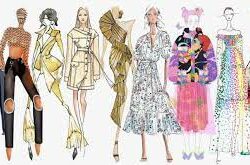Fashion clothing has always played a significant role in human culture, reflecting societal values, trends, and individual expressions. Over the years, fashion has evolved from a purely functional necessity to a means of personal expression and an industry worth billions of dollars. This article explores the journey of fashion clothing, tracing its historical roots, major milestones, and the transformative influence it has had on society.
Ancient Origins and Functional Attire
Fashion clothing can be traced back to ancient civilizations where clothing served primarily functional purposes. In ancient Egypt, clothing reflected social status, with elaborate garments reserved for the elite. Similarly, the togas of ancient Rome symbolized citizenship and rank. Throughout history, clothing also served as protection against the elements, with different cultures developing distinct styles based on climate and practicality.
Middle Ages and Renaissance: Fashion as Status Symbol
During the Middle Ages, fashion clothing became a symbol of social status and wealth. The elaborate garments worn by nobles and royalty were adorned with intricate embroideries, luxurious fabrics, and precious embellishments. The Renaissance period saw a shift towards a more individualistic style, with clothing becoming a canvas for artistic expression and a reflection of one’s personality.
Industrial Revolution and Mass Production
The Industrial Revolution brought significant changes to the fashion industry. With the introduction of textile machinery and mass production techniques, clothing became more affordable and accessible to the masses. Ready-to-wear clothing emerged, enabling people from various socioeconomic backgrounds to follow the latest trends. This period also witnessed the rise of fashion houses and designers who played a crucial role in shaping the industry.
20th Century: Fashion as Liberation
The 20th century saw fashion evolving at a rapid pace, influenced by cultural shifts, technological advancements, and global events. The early 1900s witnessed the emergence of haute couture and the establishment of iconic fashion houses. Fashion became a symbol of liberation for women, with the introduction of more practical and comfortable clothing styles like the flapper dresses of the 1920s and the pantsuits of the 1960s.
Fashion as Pop Culture
The latter half of the 20th century and beyond saw fashion intertwining with popular culture. With the rise of television, movies, and music, fashion became a powerful medium of self-expression. Icons like Audrey Hepburn, Marilyn Monroe, and Madonna shaped fashion trends and influenced generations. Subcultures and youth movements, such as punk, hippie, and grunge, introduced unconventional styles challenging societal norms.
Sustainable Fashion and Digital Age
In recent years, fashion clothing has faced criticism for its environmental impact and labor practices. As a response, sustainable fashion has gained momentum, emphasizing ethical production, recycling, and eco-friendly materials. Furthermore, the digital age has revolutionized the fashion industry, with online shopping, social media influencers, and personalized recommendations redefining the way people discover and purchase clothing.
Conclusion
Fashion clothing has come a long way from its functional origins to becoming a powerful means of self-expression, cultural representation, and even political statements. Throughout history, it has continuously evolved, adapting to societal changes and technological advancements. Today, fashion is more inclusive and diverse than ever before, catering to various body types, styles, and identities. However, as the industry moves forward, sustainability and ethical practices remain crucial for a more responsible future. Fashion clothing will undoubtedly continue to shape and reflect the ever-changing dynamics of society, standing at the intersection of art, culture, and commerce.









